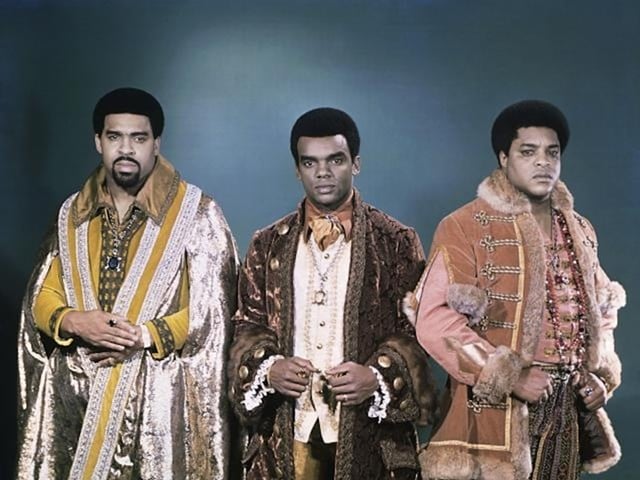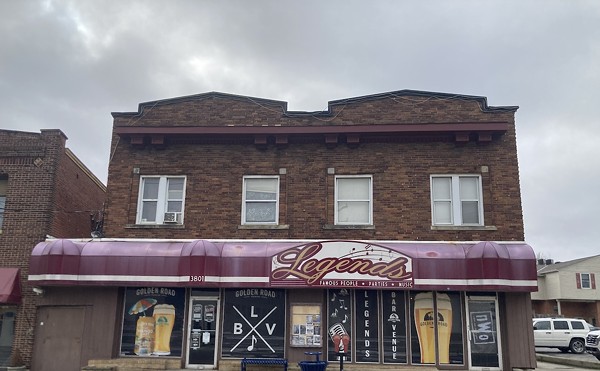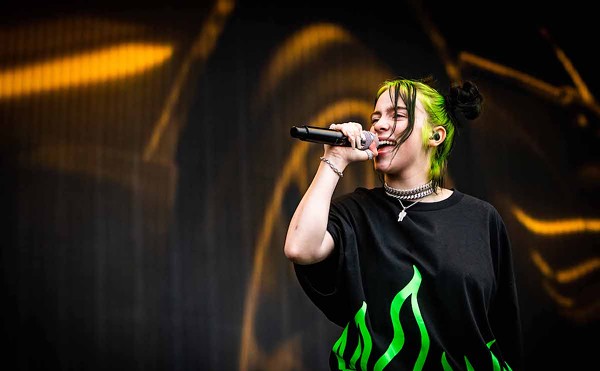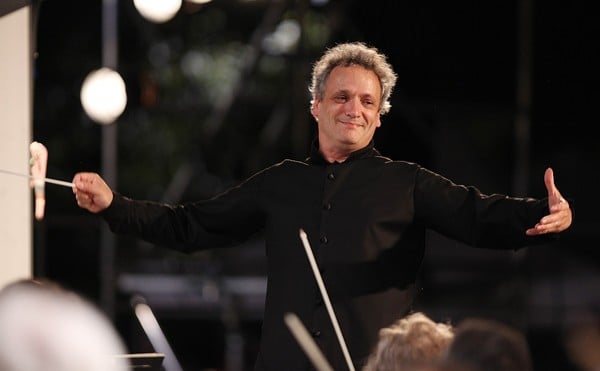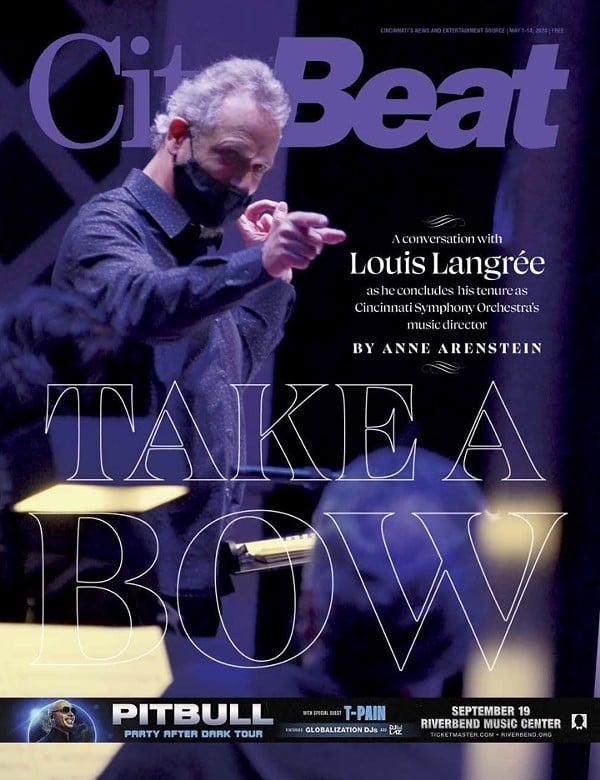
This story is featured in CityBeat's Oct. 18 print edition.
As a holiday, Halloween has experienced an astonishing centuries-long evolution. It's been linked to Samhain, an ancient Gaelic harvest festival rooted in pagan Ireland and purportedly reformed by Christians as All Hallows' Eve, the night before All Saints' Day, where the departed faithful are remembered and celebrated. Irish and Scottish immigrants introduced the religious traditions of Halloween (a Scottish contraction of All Hallows Evening originally spelled Halhalon) to North America in the 1800s, which may have inspired Washington Irving to set 1820’s The Legend of Sleepy Hollow in the holiday's context. Thus began the trick-or-treat/costume party/haunted house/horror movie secularization of a holiday which generated $10.6 billion in revenue in 2022. Look around, there's a Spirit Halloween store in an abandoned (and possibly haunted) strip mall store near you.
Just as the actual holiday has evolved, so too has Halloween music, or perhaps more accurately, the definition of what constitutes Halloween music. The religious celebration of All Hallows’ Eve featured attendant music consisting of liturgical hymns intended to create a reverent and somber atmosphere, but blues songs of the early 20th century began featuring the Devil, which were likely veiled references to the racist oppression directed at the Black community. In any event, certain aspects of "the Devil's music" became associated with Halloween.
Cultural shifts had a monumental impact on establishing a particular style that could be characterized as Halloween music. Religion had already clearly defined the parameters of Christmas music, but secular songwriters found inspiration in the holiday's 20th-century evolution and reverent hymns like "Silent Night" and "O Holy Night" were soon inextricably linked to Mel Tormé's "The Christmas Song." A similar paradigm developed around spooky music that was sometimes, at best, merely Halloween-adjacent. In the initial decades of the 20th century, there were any number of 78s featuring swing music with shadowy undertones, like the American Quartet's "The Skeleton Rag" in 1912, Maurice Burkhart's "At the Devil's Ball" in 1913 and Jack Hylton's "Bogey Wail" in 1929.
Radio technology development in the '20s and '30s made the presence of music almost universally available, which required the new stations to create a constant flow of content in the form of live and recorded music and radio plays, which, given the lack of visual cues, necessitated atmospheric soundtracks to telegraph the emotional arc of the story being presented. Ghost stories, particularly around Halloween, were popular radio fodder; ironically, the most infamous holiday radio play of all time, Orson Welles' Mercury Theatre presentation of The War of the Worlds in 1938, featured no music at all until the final two minutes of the broadcast. At any rate, the increasingly unsettling music that accompanied most horror radio plays set the stage for the films that were about to follow.
Horror had been a popular subject since the dawn of filmmaking; based on Bram Stoker's Dracula, F.W. Murnau's Nosferatu was released in 1922, and composer Hans Erdmann's score was integral to the movie's creeping impact. In 1919, Russian physicist Leon Theremin invented his eponymous sonic device, granting commercial production rights to RCA Victor in 1928, an event that would have repercussions for science fiction and horror movies in the '50s and in rock music to the present day.
In 1956, producer Dickie Goodman released his first "break-in" record, The Flying Saucer Parts 1 & II, which utilized fragments of popular songs as the responses to questions posed by a man-on-the-street reporter in the earliest (and legally contentious) example of sampling. Follow-up singles included several additional UFO-related parodies and movie monster-themed works like "Frankenstein of '59" and the topical "Frankenstein Meets the Beatles" in 1964. Because of their science fiction/horror associations, many of Goodman's novelty records became Halloween music by proximity.
In 1962, Bobby "Boris" Pickett and a session band known as The Crypt Kickers (which initially featured legendary keyboardist Leon Russell) recorded the perennially popular "Monster Mash;" the song hit the #1 slot on Billboard's Hot 100 singles chart the week before Halloween, two months after its release. Not only has the song become the single most played song at Halloween, it spawned the 1967 stage musical I'm Sorry the Bridge is Out, You'll Have to Spend the Night, co-written by Pickett, and the 1995 film version, Monster Mash: The Movie, starring Pickett as Dr. Frankenstein. Two years ago, "Monster Mash" re-entered the Billboard Hot 100, cracking the Top 40, almost 60 years after its debut.
Halloween music would not remain a novelty for long. Surf music became linked to "teenagers-in-peril" science fiction/horror films, which broadened the reach of the genre, ultimately spawning a couple of generations of horror punk bands, including the Misfits, who did their own version of "Monster Mash" in 1995. Another major turning point was the score work of composer Bernard Herrmann, who provided masterful musical accompaniment to The Day the Earth Stood Still, Journey to the Center of the Earth and Citizen Kane, and a number of Alfred Hitchcock films, including Psycho, Vertigo, The Man Who Knew Too Much and North by Northwest. Herrmann's work had a ripple effect on a broad range of artists, including a young musician in Los Angeles named Danny Elfman, who had provided the score to his brother Richard's 1980 indie film Forbidden Zone, which was based on the mid-'70s performances of his musical troupe, the Mystic Knights of the Oingo Boingo.
After Richard left the group for a film career, Danny took the helm, shortening the name to Oingo Boingo and crafting them into an amazing and eccentric eight-piece rock band, inspired in part by the ska revival and the frenetic energy of punk. Oingo Boingo's Halloween shows were the stuff of legend, and their songs "Only a Lad," "No One Lives Forever," "Nothing to Fear (But Fear Itself)," "Dead Man's Party" and "Wild Sex (In the Working Class)" became staples of horror and teen angst film soundtracks in the '80s and beyond.
Elfman has become the name at the top of short lists for film composition. He has scored nearly all of Tim Burton's movies since his 1985 debut, Pee-Wee's Big Adventure, including his astonishing and evocative work on the cross-holiday, stop-motion animation masterpiece The Nightmare Before Christmas (where Elfman sang the vocals for Pumpkin King Jack Skellington) and he famously provided one of the most iconic musical signatures in television history with the theme to The Simpsons. To date, Elfman has been responsible for well over 100 albums, including his most recent solo album, 2021's Big Mess, and his spectacular work on the inaugural Netflix season of the Addams Family spinoff Wednesday.
Halloween wouldn't be the same without his incredible catalog. But if one rock figure of the past five decades could claim to have brought a certain legitimacy to the concept of Halloween music, Alice Cooper could easily accept that honor. From the beginning, Cooper and his original band became known for outrageous costuming — Cooper noted that his look was inspired by Bette Davis in Whatever Happened to Baby Jane, Anita Pallenberg in Barbarella, and Diana Rigg's Emma Peel on the '60s spy series The Avengers — and an intensely compelling stage show. Each successive touring cycle after their breakthrough third album, 1971's Love It to Death, became more elaborate and viscerally shocking, with Cooper portraying himself as a villainous danger to decent society.
Early Cooper shows ended with his anti-hero's "execution" in an electric chair, which was ultimately switched out for his even more graphic demise in a stage guillotine. Given the garish costumes, unique special effects (some of the earliest were designed by magician James Randi) and violent stage antics that tipped a bloody top hat to the Grand Guignol performances of the same-named Parisian theater that lent its name to any brutally realistic fiction, every night for Alice Cooper was Halloween, and every show was an over-the-top trick and a screamingly original treat.
At 75, Cooper remains an active recording artist with a relatively busy touring schedule. He just completed a month-long tour for his recently released album, Road, which saw him co-headline shows with metal provocateur/horror filmmaker Rob Zombie, who has always cited Cooper as his primary influence. Zombie's not alone; Sex Pistols/Public Image Ltd. frontman John Lydon claimed to know the words to every Alice Cooper song, and bands as disparate as the Flaming Lips, the Germs, the Ramones and even David Bowie have been steered by the king of shock rock.
What can be gleaned from this truncated musical history lesson? It would seem to indicate that seminal artists from the earliest reaches of the previous century, standard bearers from its post-war years, novelty purveyors from the post-war period and rock icons in the prime of their creative lives have all guaranteed through their advances that generations of artists who have been influenced by any of the above have the freedom to decide for themselves how to define Halloween music. God bless dancing skeletons, ghouls, zombies, ghosts, witches, candy makers, the Ben Cooper costume company, Michael Jackson's "Thriller" video and the throbbing, bloody heart of Halloween music, whatever that happens to be for each of us.
Subscribe to CityBeat newsletters.
Follow us: Apple News | Google News | NewsBreak | Reddit | Instagram | Facebook | Twitter | Or sign up for our RSS Feed

